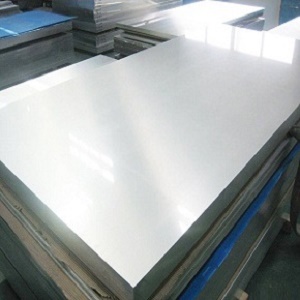Monel 400 plate-Roofing and Shielding
Monel alloy is utilized as a construction material at the various temperatures and, is available in the fabricated forms. Monel 400 plate is used in roofing, flashing and several other building applications.
Crimped Monel alloy is used for the different flashing applications such as penthouse sidings and parapet covers and for roofing. These don’t need expansion joints hence preventing the need of regular maintenance. Monel alloy is readily workable and machinable by rolling mill techniques and can be forged, drawn and cast. It is easy to weld and solder.
 Monel is commercially available in rod, bar, wire, sheet, strip, tube, plate and mesh forms. Conditions in which Monel alloy should not be used:
Monel is commercially available in rod, bar, wire, sheet, strip, tube, plate and mesh forms. Conditions in which Monel alloy should not be used:
a. When a colored roof is needed
b. When roofing or flashing might cause an unsuitable galvanic couple.
c. When corrosion resistance and suitable durability are not specifically needed.
Invention of Monel Alloy
Monel alloy was discovered in 1905 and its original composition included as 2/3rd nickel and 1/3rd of copper. The oxides developed were reduced with carbon and with a limited magnitude of charcoal in a specific open-hearth furnace. The produced molten metal was refined in an electric furnace and the final product, Monel alloy was drawn off into ingots.
Significance of Monel Alloys
Monel 400 is a popular material for use in marine industry, chemical and hydrocarbon processing system, valves, pumps, fittings and heat exchangers. It is also used as metal equipments and frames of eyeglasses. Earlier stainless steel was used to replace Monel in 50s as it contains smaller content of nickel in it and, therefore being more economical.
Monel Corrosion resistance
Monel is unsuitably resistant to nitric oxides and sulfur dioxides. Combination with water is extremely corrosive to Monel. Nitrous and nitric acids, hypochlorites, acidic and alkaline oxidizing salts, chlorides and sulfates of ferrous, cupric chloride, stannic chloride and silver nitrate severely corrode the Monel metal.
Monel is resistant to sulfurous acid by different magnitudes depending on environments. Monel prevents attack in organic acid. Use of Monel 400 in aerated hydrofluoric acid in various conditions can result into stress corrosion cracking. Monel is attacked by aluminum, zinc and iron metals in the different corrosive media. Due to this, these metals are not used to electroplate the Monel metal.
Monel has greater service temperature than nickel that is about 540oC and its melting temperature is around 1350oC, therefore it is an ideal metal for boiler feed water heaters and various heat exchangers.
Monel is known for its potential to withstand vigorous corrosive media, pitting attack occurs when the metal is subjected to stagnant salt water. The corrosion rate of Monel reduces rapidly with the increase in the nickel concentration. A series of copper-nickel alloys have been evaluated in natural marine water and in chloride media in the various environments. Selective electrodissolution of nickel is essential while others have discovered that the dissolution of copper is based on the composition of the alloy during study.
Monel alloy is produced in Monel 400 and Monel K500 types that are extremely corrosion resistant and stronger than steel. Monel is malleable, easy to weld, braze and solder.

